
The Non-Existence of “The Future”: This week, take a moment to consider your organization’s culture, and how it is manifested among those within your span of influence. Next, recognize that the future is plastic: your organization, your team, is not moving toward a predetermined future world, but instead are active participants in the creation of its future. With perseverance and resilience, mindfully create the culture you desire.

Insightful & grounded words of wisdom on how to be an agent of change from my amazing colleague Maxim Sytch
https://hbr.org/2019/02/how-to-figure-out-how-much-influence-you-have-at-work
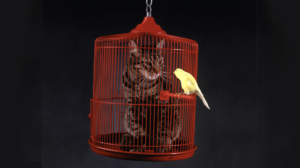
Pixar Animation Studios has this wonderful short that can serve as a powerful conversational starter in your organization on a variety of topics–culture, on-boarding, diversity, change. Enjoy! Thank you Kristen Lester and Gillian Libbert.
The tidy wars: Thank you Carly Stern for the interview and this write-up on designing your workspace for innovation versus execution (and for keeping the part about Coachella and skateboards!):
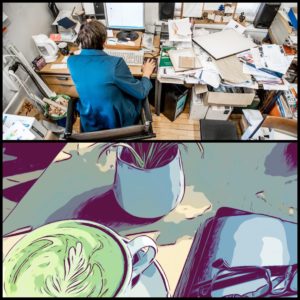
That which makes kings can make monsters and the risks are too great to put all our milk into one cheese. Therefore, its imperative for organizations and capital markets to heed lessons on biodiversity from population ecology. He didn’t put it in those words and you’ll certainly develop your point of view on this reasoned yet provocative new piece by Roger L. Martin on the folly of a myopic focus on efficiency.

Keenly aware of my impermanence, I write, I attempt to inspire others, and love immensely. All this, based on the belief that the residue of our efforts outline the legacy we hope to leave. Here’s to a year of mindful intentionality.

No matter your role in the organization, one marker of your transformational leadership is how you always sense the group atmosphere and act accordingly (c.f. kūki o yomu in Japanese).

As a young cultural anthropology student, I took the opportunity to conduct participant observation among Gelugpa Buddhists. There, I saw devotion to compassion for others. I also observed a relentless curiosity for alternative futures. Combine these with another’s culture’s notion of concentrated intention -a la a drishti- and we have unusual, therefore perfectly appropriate, sources of inspiration for where to focus our efforts in the coming year: designing to make a positive difference in society.
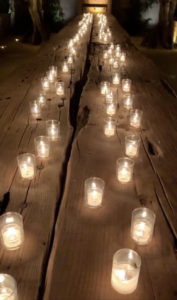
Tourists see the pins, the humble sojourner notes the spaces in between. Making deeper connections with a place, its distinct culture and unique people offer greater promise to discover an underlying common humanity.

The world is hungry for positive energy, humility, and an uber collaborative spirit. These folks embody that and so much more-thanks for teaching me so much this week (& the surprise threads)-Namaskar
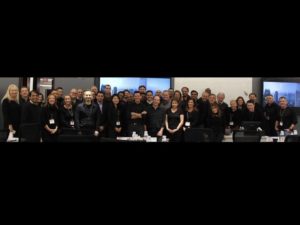
Reading the room.
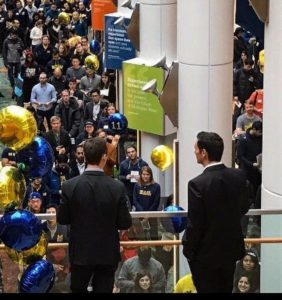
A divide between work & non-work defines professionalism but can hamper bricolage-innovation. In the spirit of blurring that divide, here is a peak of my non-work activity: making music with Models+Architects (www.modelsandarchitects.com) with/ Chris McCleary Mark Bishar Gary Burroughs.
Wonderful sharing and learning from alumni and friends on location at Peju Winery.Thank you Steve Guido.

Wonderful Learn & Share with Sharon Gauci and her amazing team of industrial designers @ the iconic General Motors design center.
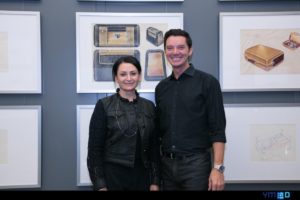
An inspiring story about women and the evolving world of design. Grateful for time spent collaborating with the amazing Sharon Gauci: https://tinyurl.com/ybeb34uz
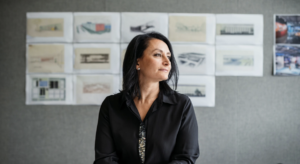
Model ‘Intellectual Humility’ to incite in others curiosity, creativity and foster constructive innovation jams. Great insights from Tenelle Porter: https://lnkd.in/ep_9Wku https://lnkd.in/eHvjMXE

Singapore: After a day of teaching bricolage & innovation, we literally bumped into Richard Branson here to announce his own bricolage par excellence.

Inject humility into your initial pitch, (e.g., “I’d like to share with you this imperfect idea….”) to elicit the best in those able to improve your idea.

“Relationships are vibrational” Alya Al Mulla from the UAE Ministry of Happiness and Positivity told me last week in Dubai. Their efforts, grounded in research aim to help citizens by increasing government worker’s happiness and wellbeing. A wonderful example of how to scale meaningful relationships.
Collaborating with Bruce M. Tharp and Marcus Collins on this Leading Design program has been an amazing experience – Namaskār
When being interviewed or simply making a new contact, do the following and you will be seen as smarter, more open & extraverted, and less likely to be deceived: Make a human connection by having a live conversation (don’t email) or shake hands (in the West). (https://lnkd.in/emK6Nr3) (https://lnkd.in/eDTKARy) (https://lnkd.in/eVJQrzW) (https://lnkd.in/egCSARW)
Photo by Andrei Lazarev

Social-videotape: We reminisce with others not to relive shared memories, but to reconstruct a more complete memory of shared experiences.

To design is to enact “courses of action aimed at changing existing situations into preferred ones (Herbert Simon, 1982, p. 129). Regardless of your title, you can choose to be a designer. Start within your span of influence to design the positive changes that you believe are possible.

Looking to improve an initial idea? Simply & wholeheartedly impart only the underlying architecture of your concept, then invite others to identify the bright spots. Creators can be blind to their best angle.
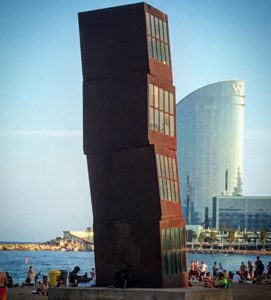
New discovery on why we are hesitant about conveying our gratitude to others: We underestimate the positive mood it will create in others, overestimate the awkwardness it make us feel, and are wary about our competence at pulling it off successfully. https://lnkd.in/enMpD82 Gratitude
Photo by Priscilla Du Preez

Fostering novelty, creativity, and the opportunity to innovate significantly increases engagement in the workplace around the world (as shown in work by Francesca Gino hashtagRebeltalent) Photo by Yasin Hoşgör

Innovators, change agents take note: All you need is to inspire another 4 in a group of 20 to replace an old way of thinking with a new one. Great new data on the tipping point for social change https://lnkd.in/e8wicfP https://lnkd.in/eyE4uvP

When exploring new ways to solve old problems, naiveté is a virtue.

To design useful and elegant solutions, fashion your initial prototype around the concept of wabi-sabi (侘寂). All too often we over invest (time, resources, emotional energy) in our initial idea before we share it. Instead, accept the imperfection and impermanence (i.e., wabi-sabi https://lnkd.in/dW2hMKi ) of your initial idea. If you do this, others will shift from shooting your idea down to helping you improve it.

Core Stories: Creating space to share prior challenges and how our past has shaped our present is experienced by both parties as beneficial according to an engaging talk by doctoral student Eun Bit Hwang https://lnkd.in/e7HjcJd . Engaging in these conversations breaks down the barrier between the professional and the personal ( https://lnkd.in/eH42fFQ https://lnkd.in/es-XcxT ) and causes us to perceive one another as more human, more than simply coworkers.
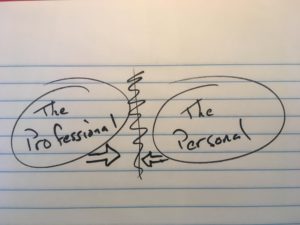

Closing time. Why do we wait til the end before we share the important bits with others? We hold off on gratitude: “Your infectious smile filled this office with joy,” and meaning: “When you were alive, you showed me how to differentiate the forest from the trees.” You might recognize this pattern not only at funerals, but in what people share with a soon-to-be ex-coworkers at their going away party or a professor’s festschrift….Test the hypothesis that you and the other will find it more rewarding to ditch the delay in telling others the impact they are having on you. You could go all Stevie Wonder: “I just called, to say…” For a moving demonstration of this from an innovative Dutch company see https://lnkd.in/dKptxDs See also work by Kim Cameron and robert quinn
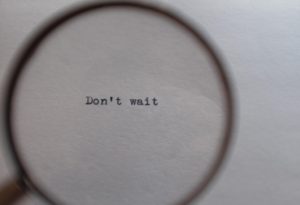
To increase engagement, stop thinking of external rewards (whether it’s $, chocolate, or simply affirmation) as something that undermines intrinsic motivation. Moreover, when leaders introduce rewards while their talent are performing a task, it paradoxically increases worker’s psychological experience of finding the work intrinsically motivating. Supporting data just shared by Fishbach, Ayelet at the University of Michigan – Stephen M. Ross School of Business Management & Organizations Brownbag.
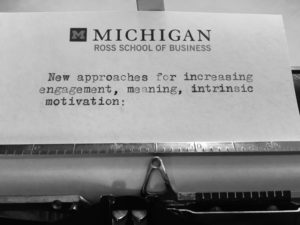
When we create, design or develop, we don’t actually lack perspective; we simply don’t take the right perspective. In designing a great product, service or solution, we often aspire for our work to be affirmed by our peers, jurors of prestigious competitions, or featured on the cover of our industry’s magazine. Unfortunately, those folks are not the ones that will have to use or experience our products, services or processes in their daily life. As Prof. Donald Norman, one of the founders of human-centered design, bottled it, “The designer’s clients may not be users.” [Art by Katerina Kamrani] https://lnkd.in/ecAhCE4 https://lnkd.in/ecfiNUv

Time for timeless insights from, ‘Zen Mind, Beginner’s Mind’ by Shunryū Suzuki, (1970).
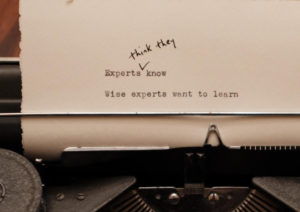
The ink dries slower than we think. We can press too hard for a good bargain when we forget that the deal really begins *after* the parties sign. To ensure the other side follows through as promised, complement your tough strategy with wisdom to keep your eye on the long game.
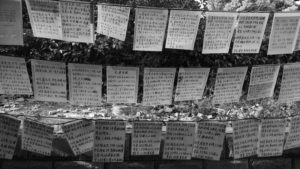
When your reasonable points fall on deaf ears: surprise your counterpart by acknowledging their power, dignity and face. Try an apology when they don’t expect it, when they feel you are more powerful. Surprise has been shown to get others to pay closer attention and to reduce their initial biases against us…just ask Professor @RichardCrisp https://lnkd.in/dntcprt

The test of a first-rate intelligence is the ability to hold two opposed ideas in mind at the same time… -F. Scott Fitzgerald, 1936. This is true for groups as well. So, resist getting your team on the same page emotionally; delay that pep talk, hold off on the scary details, until you first get their perspectives. When we engage in emotion management, we inadvertently homogenize points of view. This stems from how different moods and emotions give rise to different thoughts. So instead, when you need to tap the wisdom of a group, let the diversity in how they feel at the moment spark diverse insights and perspectives.

“Life can only be understood backwards; but it must be lived forwards” (Søren Kierkegaard, 1844). As such, try to keep up with all the rich history you encounter as you move forward in this brave new world.
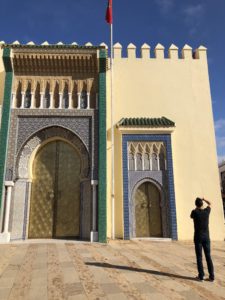
Culture comes from the Latin, cultura meaning the cultivation of the soil, and later came to mean cultivation of the soul. Akin to the process of cross-pollination, we can enrich our own culture through meaningful cross-cultural connections. Reach out to that coworker, shopkeeper or person on the street—the one that is not like the others, and ask, what might I learn from them. You just might strike up a friendship that will enrich each other. [Photo of friendship gift from Egypt to Spain #Temple of Depod]

It’s abundantly clear that disruptions across industries have centered the current zeitgeist on innovation and creativity. As we look to next year, based on what I am seeing in my research and work in executive education, is a complementary trend. Specifically, there will be a more intense race to build new leadership capabilities required to foster customer-centric innovation and cascade new tools and perspectives through all levels of the organization. This trend will be ubiquitous. From financial services to technology and telcos, mobility companies to the arts, more attention will be given to the subtleties entailed in building sustainable teams able to tackle innovation challenges. This means greater attention to how to manage the emotional tenor and tempo of teams as they more quickly iterate between learning, ideating, and experimenting with novel solutions. Leaders will be empowering each tile in their mosaic to innovate while ensuring they align in a coherent form. This leadership development focus will provide a competitive advantage to many. A lack of care about the unique facets of leadership that drive innovation and change may very well present a fatal blow to organizations facing the most disruption in their ecosystem.
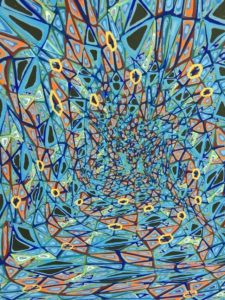
Oceans, in a way, are like the diversity of people that inhabit their respective shores. From the Pacific to the Indian, they share a great deal in common, and yet have characteristics unique to each one. To focus on superficial characteristics – they all come in shades of blue-green – is to ignore more subtle, nonetheless powerful differences that distinguish them: the movements of their currents, the variation in their tides; differences that are essential to recognize if one wishes to navigate across them.

What’s the frequency Kenneth? Deep breath, your coworkers are actually not that emotionally unintelligent; it appears quite common for EQ scores to significantly drop upon entering work mode ( https://lnkd.in/eP_G4ix .). Having an ability does not mean we’ll necessary use it. In short, its not an issue with dialing into other’s frequency, rather we just need to make sure to keep our antenna up.

Early prototyping is for learning how to improve an imperfect idea. Help your teams avoid sabotaging such learning; First teach them to resist our propensity to blame others when things do not unfold perfectly https://lnkd.in/eq272Hd https://lnkd.in/eY2Vjhg.
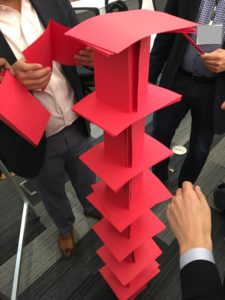
Walt put tremendous effort into gaining a child’s perspective. This is remarkable only insofar as Disney, along with each of you, already have years of experience as a child. If it takes that much work to (re)gain a perspective we already possess, how much more effort is required to gain a perspective we never had. As the late great Tom Petty put it, “you don’t know how it feels to be me.” So let’s roll up our sleeves and learn.
Restore humanity to those recruitedto watch the inhuman. This is a genuine call to save human souls by making a particular job obsolete. Technologist, please design a bot that can filter this type of unstructured data. ( https://lnkd.in/e-TCTvi). Success would provide a great example of how we can do better than simply innovating for greater convenience.

Just because you took a picture, doesn’t mean you were there. Mark Twain’s insight that travel can lubricate societal discord https://lnkd.in/eSPMbck can only be realized when our snapshots are complemented by genuinely taking note of the moment https://lnkd.in/eqQ9SDm) https://lnkd.in/eYXGi5k Try this mindful engagement and written reflection rather than a filter to enhance that image in your phone.

Wanderluster take note: Indirectness is the norm not the exception in most cultures, particularly across the Far East (https://lnkd.in/eG8E7R4 https://lnkd.in/eWC8RDq , https://lnkd.in/eaGi7QF. But there are clear exceptions where its considered best not to beat around the bush. Here, in Mumbai, at the intersection where the semantic meaning and literal meaning meet (https://lnkd.in/edWNDzj), there is little space for miscommunication.

The prime meridian is a prime example of that imaginary line we draw in the sand when negotiating with others. We typically rush to make the first offer for advantage (https://lnkd.in/dwEbDwJ). What if, instead, we move quickly to meet them more than half way on an issue? With long term partners-professional or personal-it can trigger a virtuous cycle of reciprocity (https://lnkd.in/dBmex_7). Bonus: working to be that much more emphatic will make it easier for you to address their real concern and nudge them to address yours https://lnkd.in/dHaEAKf